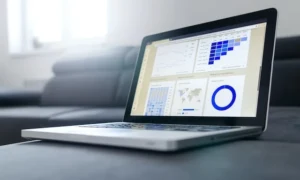Catalysing Transformation: Rethinking the Education System in India with the Integration of Interactive Flat Panel Displays
Introduction:
The Indian education system, a linchpin of societal development, stands at a pivotal juncture calling for transformation. This article delves into the question of how we can instigate meaningful change in the education system of India. By exploring challenges, envisioning solutions, and emphasising the role of innovative technologies like interactive flat panel display, we aim to chart a course toward a more dynamic, inclusive, and effective educational paradigm.
Challenges in the Current Education System:
Rote Learning Culture:
- The predominant emphasis on rote memorization in the Indian education system has been a subject of criticism. Shifting from a rote learning culture to one that fosters critical thinking and problem-solving is imperative.
Examination-Centric Approach:
- The pervasive examination-centric approach places undue pressure on students, promoting memorization for exams rather than a genuine understanding of concepts. A holistic assessment system that evaluates various skills is needed.
Inequality in Access:
- Disparities in access to quality education persist across different regions and economic strata. Bridging this gap and ensuring equal opportunities for all students is essential for the system’s efficacy.
Outdated Curriculum:
- The curriculum in many cases is perceived as outdated, lacking relevance to real-world applications and the dynamic needs of the job market. An updated and flexible curriculum is essential for preparing students for the challenges of the future.
Strategies for Change:
Introduce Holistic Assessment:
- Moving beyond the traditional examination model, there is a need to introduce holistic assessment methods. This includes evaluating not only academic knowledge but also practical skills, creativity, and critical thinking abilities.
Revise and Update Curriculum:
- Regularly revising and updating the curriculum to align with contemporary challenges and technological advancements is crucial. It should emphasise practical application, interdisciplinary learning, and the development of soft skills.
Teacher Training and Professional Development:
- Investing in teacher training and continuous professional development programs is vital. Teachers should be equipped with innovative teaching methods, the latest educational technologies, and strategies to cater to diverse learning styles.
Promote Interactive Learning Environments:
- The integration of interactive flat panel displays can revolutionise learning environments. These displays offer dynamic visual content, encourage collaboration, and provide real-time assessment capabilities. They create an engaging atmosphere that promotes active participation and deeper understanding.
The Role of Interactive Flat Panel Displays:
Dynamic Visual Learning:
- Interactive flat panel displays revolutionise visual learning by providing dynamic and interactive content. These displays offer vibrant visuals, infographics, and dynamic presentations that make complex concepts more accessible. Students can interact with the visuals, promoting a deeper understanding of the material.
Collaborative Learning Opportunities:
- Interactive displays facilitate collaborative learning spaces. Students can actively participate in group activities, discussions, and interactive projects. This collaborative approach not only enhances cognitive engagement but also nurtures teamwork and communication skills.
Real-Time Assessment and Feedback:
- Interactive displays enable real-time assessment and feedback. Teachers can gauge not only cognitive understanding but also the emotional and collaborative aspects of learning. This immediate feedback loop contributes to the holistic development of students.
Multimodal Teaching Approaches:
- The multimodal capabilities of interactive displays accommodate diverse learning styles. Teachers can integrate various media, such as videos, interactive presentations, and digital annotations, fostering a holistic learning environment that goes beyond traditional cognitive measures.
Implementation Strategies:
Pilot Programs and Case Studies:
- Initiating pilot programs and conducting case studies can help assess the effectiveness of integrating interactive flat panel displays in different educational settings. This data-driven approach can guide decision-making and facilitate a gradual, informed transition.
Public-Private Partnerships:
- Collaborations between the public sector, private institutions, and ed-tech companies can accelerate the adoption of innovative technologies. Public-private partnerships can provide resources, expertise, and infrastructure needed for widespread implementation.
Community Engagement and Awareness:
- Building awareness and garnering community support is crucial. Engaging parents, teachers, and local communities in the discussion and decision-making process ensures a more inclusive and sustainable transformation.
Conclusion:
The transformation of the Indian education system requires a concerted effort from all stakeholders. By addressing challenges such as rote learning, examination pressure, and inequality in access, and by implementing strategies like holistic assessment, curriculum revision, and teacher training, we can lay the groundwork for a more progressive system.
The integration of interactive flat panel displays emerges as a powerful catalyst for change. These displays offer a glimpse into the future of education, where dynamic visuals, collaboration, and real-time feedback converge to create an immersive and effective learning environment.
As we navigate the path toward educational reform, it is crucial to embrace innovation, leverage technology, and foster a mindset of continuous improvement. By envisioning a system that prioritises holistic development, critical thinking, and adaptability, we can lay the foundation for an education system that prepares students not just for exams but for the challenges and opportunities of a rapidly evolving world.







































